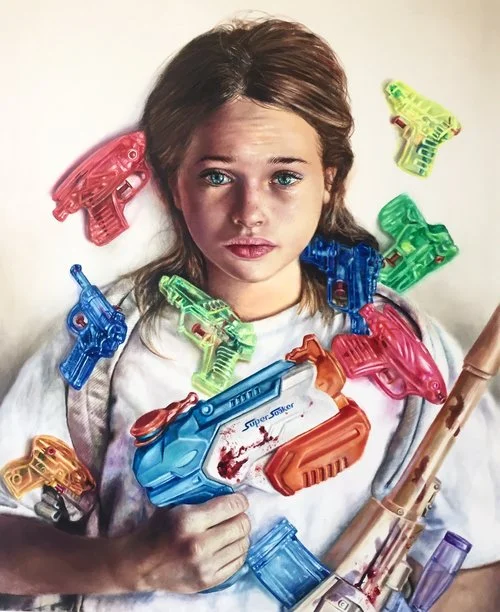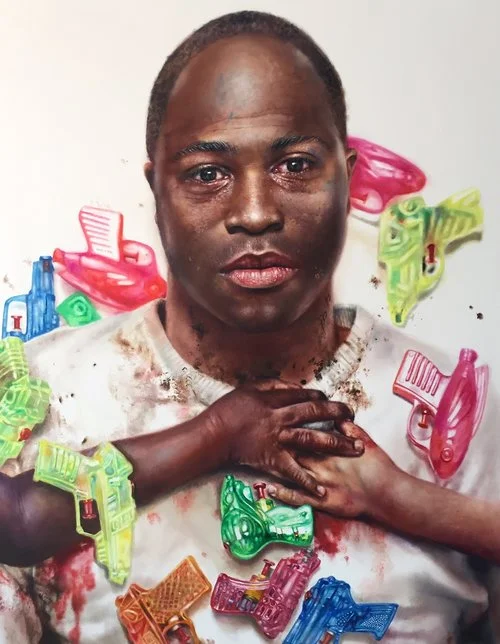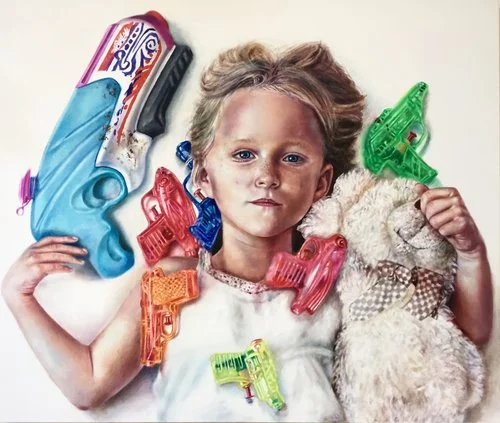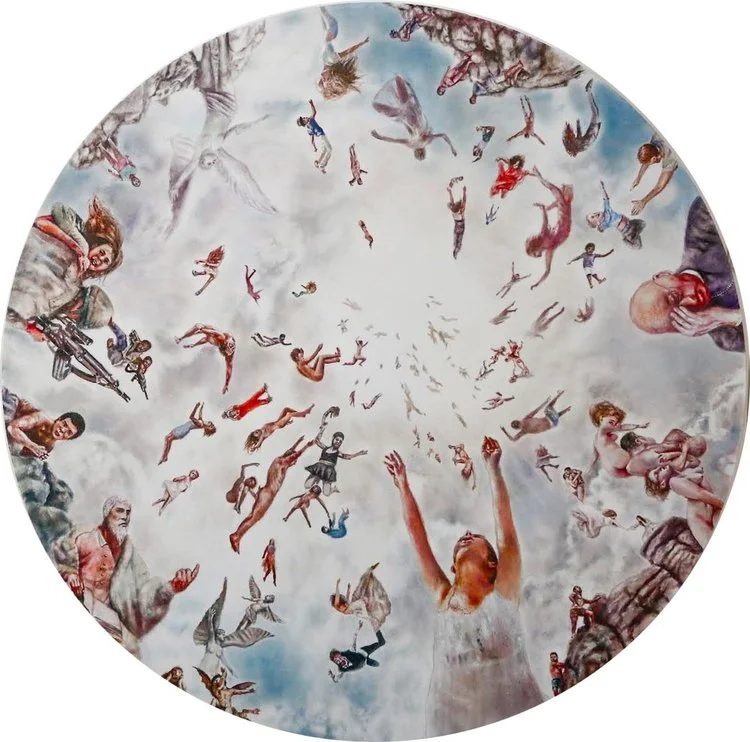The Rapture by Johan Andersson
As we stand on the dawn of a new epoch in human history complete and divided, the debates of the 20th Century still rage on. Hillary Clinton with many years of experience navigating the corridors of power in the name of both America and personal gain, a pristine icon of the extreme centre. Donald Trump navigating his own corridors in the name of Trump. One of these people will be the leader of the New World and take office at the White House in January. My question is not just who will it be and why, but where do we find ourselves located in the constellation of ideologies? Have we plateaued the potential for popular culture to extend beyond a greater refinement of formula, and are merely emulating the successes of our ancestors, if the movie studios are anything to go by with their endless reboots this could well be the case? Or is the eclecticism of post-modernism such an unstoppable monster with the advent of the internet, that we find ourselves in the cultural swamp of randomness? Does any of it matter to the individual who seeks to speak with feeling through the language of art to the best version of himself to another?
It seems we are faced with increasing divisions in the West, that in one sense allow for greater individuality then ever before and yet what we give up is any sense of unity. In researching a film about my father this last two years, I looked back at the revolutionary 60s and how far away from that united utopia they envisioned we now find ourselves. It could be said that this idea of connectedness is just an illusion and what politicians are all fighting for is a feeling that rests beneath all their rhetoric. What we all really want to end the impenetrable loneliness that we are born with, this strange feeling that others walk with us yet are never there, that is fleetingly resolved in moments of realizing our own fragility in the face of another and being met with a smile and hand on ones shoulder. Or to stand with courage in service of something larger than ourselves that we can with confidence give over to. Or as a creator, bare the weight of humanities loneliness for that period of creation to reveal our gift at the end of it all and speak with something greater than language could ever hope to compensate for.
In The Name Of God, Johan Andersson
"True religion is not a narrow dogma. It is not external observance. It is faith in God and living in the presence of God. It means faith in a future life, in truth and Ahimsa. Religion is a matter of the heart. No physical inconvenience can warrant abandonment of one's own religion" - Ghandi
In The Name Of God, a figure sits in the middle of disparate factions laying in the carnage that their ideological positions had lead them, in front of a presence of something other that they at first wished to seek; the unifying figure of Ghandi. A man who once brought together a divided India, split into argument and conflicting positions on the matters of not just material, but humanity and the spirit, he railed against the institution and demanded that we seek a deeper substance to the rhetoric. As a young man he was inspired by the essay by John Ruskin and wrote a paraphrase to Ruskin's essay Unto This Last, with the introduction 'This exclusive search for physical and economic well-being prosecuted in disregard of morality is contrary to the divine law, as some wise men in the West have shown. One of these was John Ruskin who contends in Unto This Last that men can be happy only if they obey this moral law' - Ghandi
From the 'Dirty Series' by Johan Andersson
I first saw Johan Anderson's work in 2007 after recently having graduated in Classical Theatre from Bristol Old Vic Theatre School. I was being guided by a conceptual artist, as she took me through the halls of Central Saint Martin's School of Art, I believe the project she was working on at the time was letting balloons go on the rooftop of the college and filming it. There was another melting candle wax into a wooden box, one of the students mumbled something about Ways Of Seeing. Much of the art she was showing me didn't exist. I wandered through the halls mostly uninterested. Until something happened, I encountered Johan Andersson painting "Randy", as I stopped staring into the portrait flashes of old master painters came flooding into my consciousness, from Rembrandt to Freud to Peter Howson. I was overcome by the humanity emanating from the canvas, more human than human, the presence of sentience.
Gentile Embrace, Johan Andersson
detailed the experience in Art Influence which was run at the time by the Peter Fuller Memorial Foundation now represented in this blog, it was my first published essay on art. I only corresponded with Johan via email and very briefly during that time. Subsequently our journeys diverged as I went into British theatre and independent films. I remember getting on the tube to rehearsals for my first West End show at Trafalgar Studios Madness In Valencia,script in hand as I stepped up to the platform and looked across the tracks it was unmistakably the same hand of Johan Andersson's striking me again with that same distinct feeling.
Crossing the pond to Los Angeles without knowing he was out here I encountered Johan again at the Los Angeles Art Fair, as a line of people sued up around the block to experience The Last Supper:
The Last Supper, Johan Andersson
This is Johan's latest series of paintings on gun violence, compassionate and subversive








